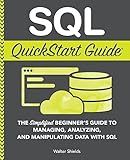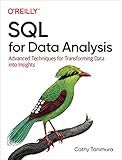Best SQL Books to Buy in January 2026

Practical SQL, 2nd Edition: A Beginner's Guide to Storytelling with Data



SQL QuickStart Guide: The Simplified Beginner's Guide to Managing, Analyzing, and Manipulating Data With SQL (Coding & Programming - QuickStart Guides)



SQL Programming QuickStudy Laminated Reference Guide



SQL Queries for Mere Mortals: A Hands-On Guide to Data Manipulation in SQL



SQL for Data Analysis: Advanced Techniques for Transforming Data into Insights



SQL All-in-One For Dummies (For Dummies (Computer/Tech))


To use GROUP BY in MySQL, you first need to specify the columns that you want to group by in your query. This is typically done in conjunction with aggregate functions such as COUNT, SUM, AVG, MIN, or MAX to perform calculations on the grouped data.
For example, if you have a table of sales data and you want to find the total sales amount for each product category, you would write a query like this:
SELECT category, SUM(amount) FROM sales GROUP BY category;
This query will group the sales data by the 'category' column and then calculate the total sales amount for each category using the SUM function.
It's important to note that when using GROUP BY, you can only select columns that are either listed in the GROUP BY clause or included in an aggregate function. Additionally, you can use the HAVING clause to filter the grouped results based on specified criteria.
How to use GROUP BY with ORDER BY and LIMIT in MySQL for efficient pagination?
To use GROUP BY with ORDER BY and LIMIT in MySQL for efficient pagination, you can follow these steps:
- Write your query with the GROUP BY clause to group the results based on a specific column.
- Add the ORDER BY clause to sort the grouped results based on a specific column or columns.
- Finally, add the LIMIT clause to limit the number of rows returned in each page of your pagination.
Here is an example query to illustrate how to use GROUP BY with ORDER BY and LIMIT for efficient pagination:
SELECT department, COUNT(*) as total_employees FROM employees GROUP BY department ORDER BY total_employees DESC LIMIT 0, 10;
In this query, we are grouping the employees by department, counting the total number of employees in each department, and then sorting the results by the total number of employees in descending order. The LIMIT clause limits the results to the first 10 departments.
You can adjust the LIMIT clause to navigate through different pages of your paginated results by changing the offset value (the first number) and the limit value (the second number). This allows you to efficiently paginate through your grouped and sorted results.
What is the advantage of using GROUP BY with DISTINCT in MySQL?
Using GROUP BY with DISTINCT in MySQL allows for more flexibility in grouping and aggregating data. It can be used to group and count distinct values in a single query, eliminating the need for multiple subqueries or additional processing. This can improve query performance and simplify the SQL code. Additionally, using GROUP BY with DISTINCT can help in producing more concise and readable results.
How to use GROUP BY in MySQL to group data by a specific column?
To use GROUP BY in MySQL to group data by a specific column, you can follow these steps:
- Write a SELECT query to retrieve the data you want to group.
- Add the GROUP BY clause at the end of the query followed by the column name you want to group by.
- Execute the query to see the results.
For example, let's say you have a table called "sales" with columns "product_id", "product_name", and "sales_amount". If you want to group the sales data by the "product_name" column, you can write the following query:
SELECT product_name, SUM(sales_amount) as total_sales FROM sales GROUP BY product_name;
This query will group the sales data by the "product_name" column and calculate the total sales amount for each product.
What is the difference between GROUP BY and DISTINCT in MySQL?
GROUP BY and DISTINCT are both SQL clauses used to remove duplicate rows from the result of a query, but they serve different purposes.
- DISTINCT:
- The DISTINCT clause is used to eliminate duplicate rows from the result set.
- It is typically used when you want to get a list of unique values from a single column, but it can also be used with multiple columns.
- It returns a single instance of each unique row in the result set.
- It is used in SELECT queries to filter out duplicate values in the specified column(s).
Example: SELECT DISTINCT column1 FROM table1;
- GROUP BY:
- The GROUP BY clause is used to group rows that have the same values into summary rows, like "find the number of customers in each city".
- It is used along with aggregate functions (such as COUNT, SUM, AVG, etc.) to group the result set by one or more columns.
- It is typically used in conjunction with aggregate functions to perform calculations on grouped data.
- It returns a single row for each group of rows that have the same values in the specified columns.
Example: SELECT column1, COUNT(column2) FROM table1 GROUP BY column1;
In summary, DISTINCT is used to remove duplicate rows from the result set, while GROUP BY is used to group and aggregate rows based on the specified column(s).
What is the significance of the order of columns in the GROUP BY clause in MySQL?
In MySQL, the order of columns in the GROUP BY clause is significant because it determines the grouping of rows in the result set. The columns listed in the GROUP BY clause are used to group the rows by unique combinations of values in those columns.
If the columns are not listed in the correct order in the GROUP BY clause, the result set may be incorrect or unexpected. The order of columns in the GROUP BY clause should correspond to the order in which you want to group the rows and apply aggregate functions to the grouped data.
It is also important to note that, in MySQL, the ORDER BY clause is processed after the GROUP BY clause. So, if you want to specify the order of the grouped results, you should use the ORDER BY clause with the same columns as the GROUP BY clause.
